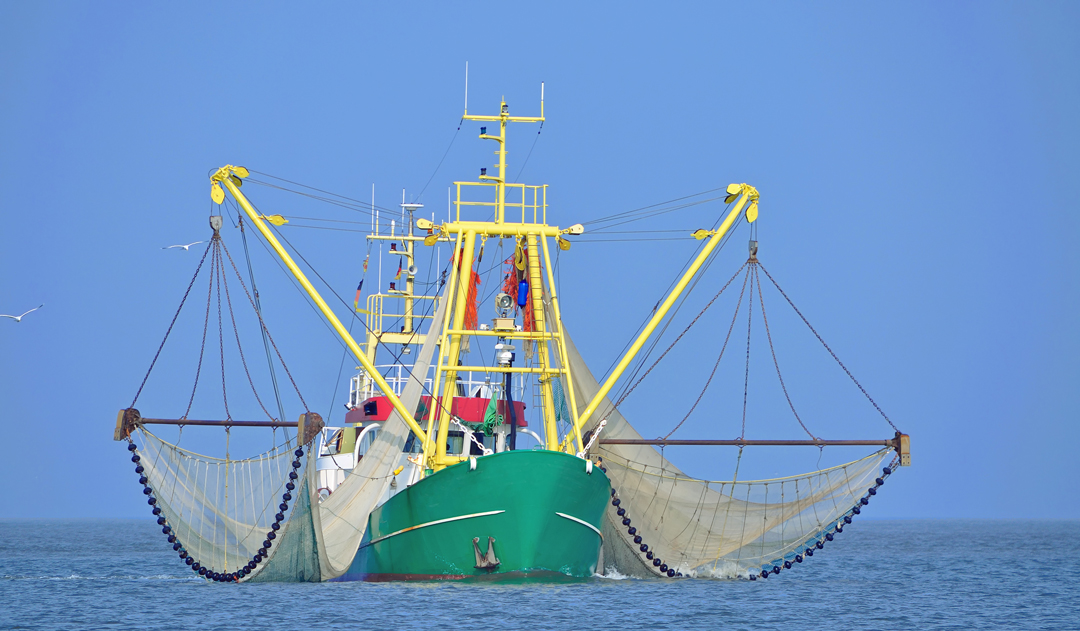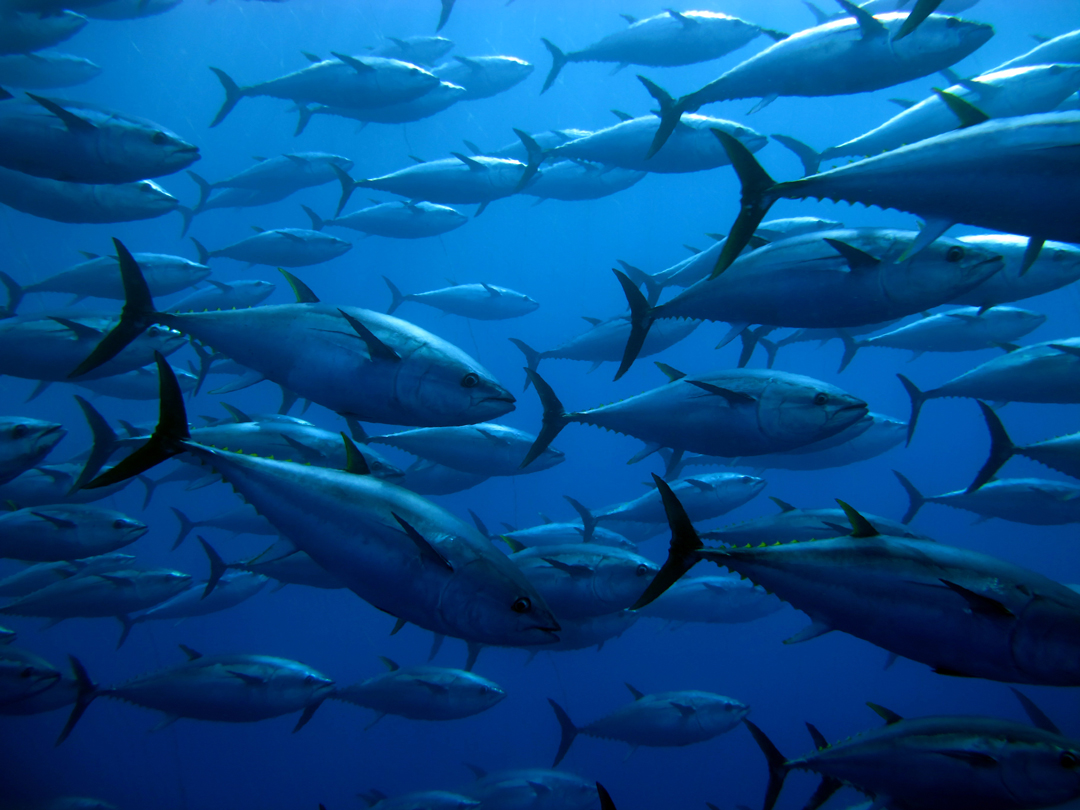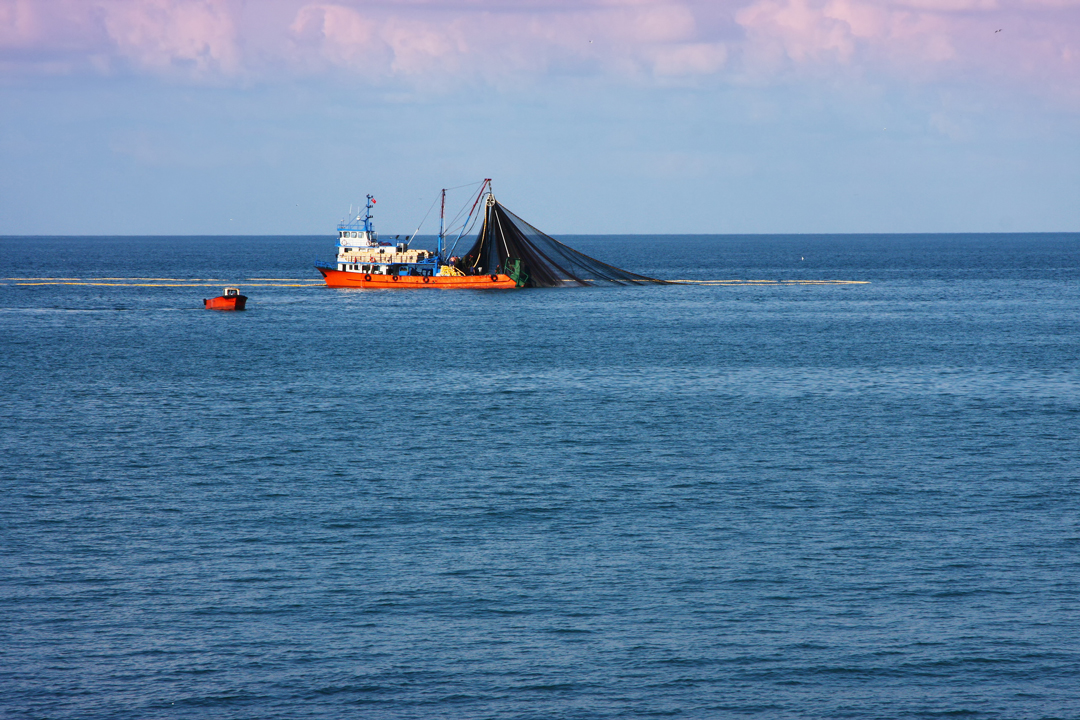Sustainability in remote seas: out of sight, out of mind?

With many fish populations in serious trouble, transparency along all steps in the journey from the ocean to your plate is critical. Transshipment – the practice of transferring catches from the fishing vessel to a refrigeration vessel that takes the cargo back to port – might be a way to make things more efficient in the fishing industry, but it’s masking some illegal practices. Keeping track of transshipment, it seems, might be key to truly knowing the source of our fish and monitoring the sustainability of the industry.

Photo © Alessandro De Maddalena | Shutterstock
Fishing vessels far out at sea meet up with a refrigerated cargo vessel, exchange crew, catch or supplies, and then stay out on remote fishing grounds while the recipient vessel heads back to port. Transshipment, as it’s dubbed, cuts fuel costs and gets fish to their end market efficiently. Unfortunately, this practice also exacerbates the incidences of illegal and unreported fishing, and allows for human rights abuses like slavery and human-trafficking to perpetuate. By obscuring the supply chain far out at sea, fish that have been illegally caught can make their way onto legal markets, and all manner of abuses stay out of sight, and therefore, away from the arm of the law.

Photo © Travelpeter | Shutterstock
The authors of two landmark studes published in July say that if we’re truly going to address sustainable fishing, and tackle the human rights issues that often go hand-in-hand with the industry, we need to better understand and monitor transshipment. Scientists used satellites and machine learning to track the refrigerated vessels (known as reefers). They wanted to understand when and where transshipment happens in our oceans, and what kind of vessels were involved. The technology they used was first developed as part of a study to map the global extent of fishing by researchers at Global Ocean Watch and Sky Truth. Nathan Miller, the lead author of the paper published in Frontiers in Marine Science, tracked 694 vessels that would transport catches back to port, and assessed their behaviour. They found that transshipment happens on the high seas 47% of the time; out of sight from most legal oversight. They also found that 42% of vessels involved in transshipment were flying flags of convenience. This, Miller and colleagues say, highlights the fact that tackling fishing sustainability and human rights abuses in the industry will require a global perspective and cooperation right across country borders.

Photo © Jorge Manso | Shutterstock
Kristina Boerder, together with Nathan Miller and Dr. Boris Worm, a Marine Biology Professor in Dalhousie’s Faculty of Science, mapped where transshipment happens, and what vessels are implicated. The findings, published in Science Advances, found that trawling vessels were involved in 53% of transshipment cases, while longliners were implicated 21% of the time. While transshipment happens across the globe, there are hot spots off West Africa and Russia, and in the tropical Pacific Ocean. These are key areas to focus on for improving trade regulations and fisheries management, says Boerder. Thanks to these studies, scientists are now equipped with new ways to trace seafood along its supply chain.
Hopefully, with the addition of “eyes in the skies” from satellites, and the insights from these studies, researchers and managers can investigate solutions in the seafood sector. It will benefit biodiversity, and the people whose livelihoods are linked to the sea.

Photo © Yavuz Sariyildiz | Shutterstock
References:
Boerder K, Miller NA and Worm B. 2018. Global hot spots of transshipment of fish catch at sea. Science Advances 4 (7), eaat7159.
Miller NA, Roan A, Hochberg T, Amos J, Kroodsma DA. 2018. Identifying global patterns of transshipment behaviour. Frontiers in Marine Science. 10.3389/fmars.2018.00240
